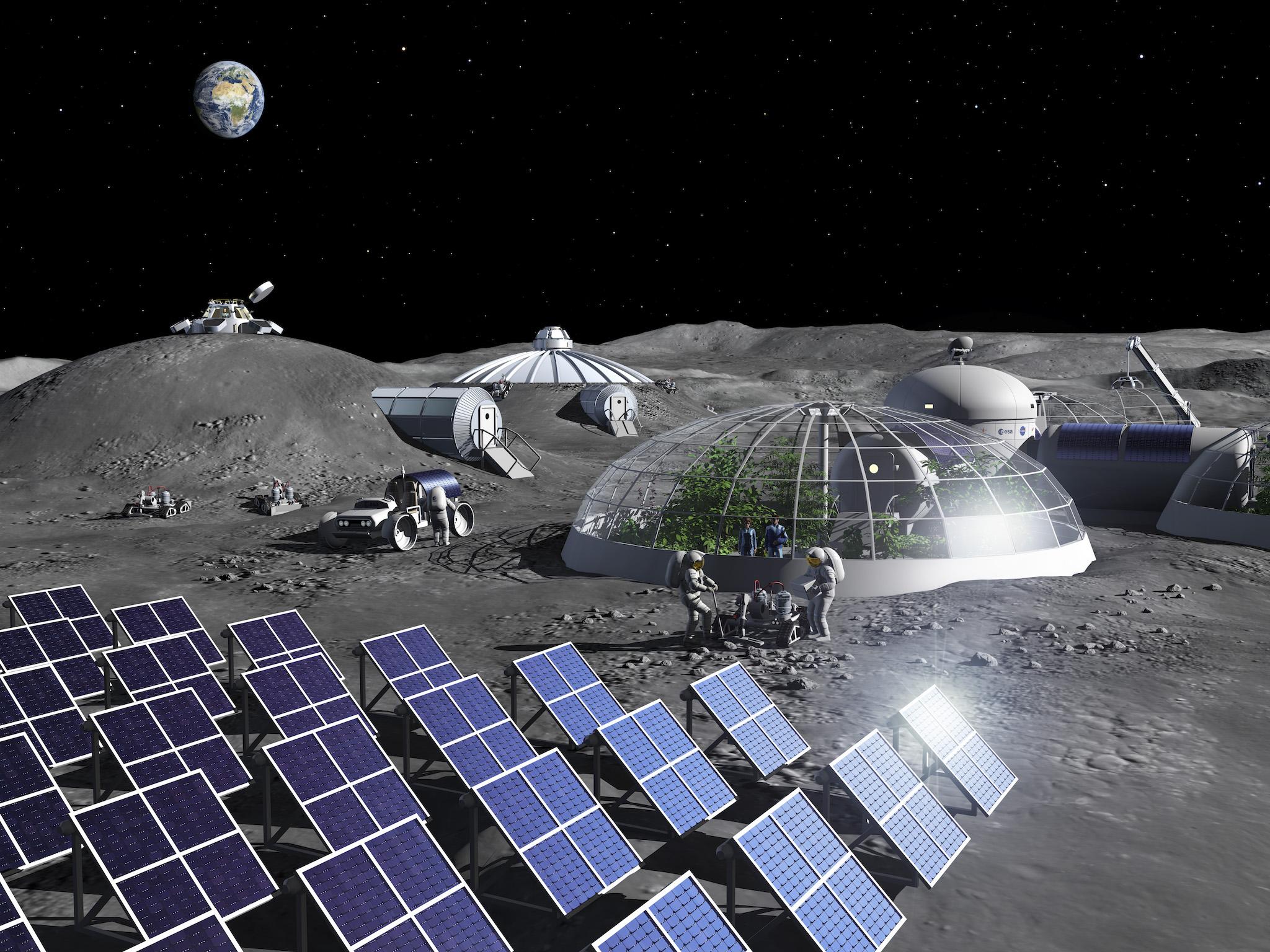Scientists start making air out of lunar dust as part of plan to live on the Moon
Oxygen will be required for breathing and for making rocket fuel

Your support helps us to tell the story
From reproductive rights to climate change to Big Tech, The Independent is on the ground when the story is developing. Whether it's investigating the financials of Elon Musk's pro-Trump PAC or producing our latest documentary, 'The A Word', which shines a light on the American women fighting for reproductive rights, we know how important it is to parse out the facts from the messaging.
At such a critical moment in US history, we need reporters on the ground. Your donation allows us to keep sending journalists to speak to both sides of the story.
The Independent is trusted by Americans across the entire political spectrum. And unlike many other quality news outlets, we choose not to lock Americans out of our reporting and analysis with paywalls. We believe quality journalism should be available to everyone, paid for by those who can afford it.
Your support makes all the difference.A new oxygen plant built to produce oxygen out of Moon dust hopes to lay the foundations for the lunar base of the future.
The European Space Agency has opened the plant as part of its plans to send people to live on the Moon in the years to come.
If humans are to live on the lunar surface – a focus of space agencies around the world, and an important step for humanity's journey to Mars and beyond – they will need access to oxygen to breathe and create rocket fuel for travelling around.
The ESA hopes that the new plant can provide practical ways of creating that using the dust on the Moon's surface – known as regolith – in a way that could one day be transported there.
“Having our own facility allows us to focus on oxygen production, measuring it with a mass spectrometer as it is extracted from the regolith simulant,” said Beth Lomax of the University of Glasgow.
“Being able to acquire oxygen from resources found on the Moon would obviously be hugely useful for future lunar settlers, both for breathing and in the local production of rocket fuel.”
Before the technology could be taken to the surface, it will need tweaking to get it ready for use in the harsh environment of the Moon.
“And now we have the facility in operation we can look into fine-tuning it, for instance by reducing the operating temperature, eventually designing a version of this system that could one day fly to the Moon to be operated there," said ESA research fellow Alexandre Meurisse in a statement.
Oxygen is the most abundant element in moondust, with experiments on samples delivered back down to earth showing it represents as much as 45 per cent of its weight.
But it is largely trapped as minerals or glass, and so can't be easily accessed by astronauts.
The process used in the plant is called "molten salt electrolysis". It sees the regolith placed into a metal basket alongside a salt, and then heated up to 950 degrees Celsius, and then having a current passed through it.
That leads the oxygen to come out of the dust and be ready to be collected. The rest of the regolith is also converted into metal alloys.
Scientists hope this process can be made into a form that could be used on the Moon, with the hope of getting it there in the mid-2020s.
“ESA and NASA are heading back to the Moon with crewed missions, this time with a view towards staying,” said Tommaso Ghidini, Head of ESA’s Structures, Mechanisms and Materials Division.
“Accordingly we’re shifting our engineering approach to a systematic use of lunar resources in-situ.We are working with our colleagues in the Human and Robotics Exploration Directorate, European industry and academia to provide top class scientific approaches and key enabling technologies like this one, towards a sustained human presence on the Moon and maybe one day Mars.”
Join our commenting forum
Join thought-provoking conversations, follow other Independent readers and see their replies
Comments